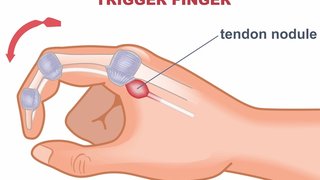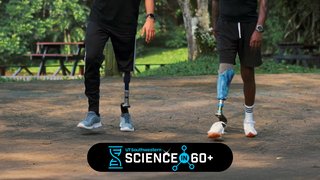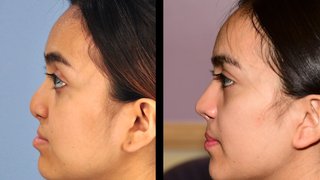Breast implant illness: Diagnosing and treating its many complex symptoms
December 5, 2022

More than 365,000 women received breast implants in 2021, a 44% increase from the year before.
Breast augmentation remains one of the most common and popular plastic surgery procedures performed in the U.S., and it has a low risk of complications – the most common being breast pain, changes in nipple and breast sensation, scar tissue formation, and rupture and deflation.
However, a small number of women experience a compilation of symptoms that has come to be known as breast implant illness, or BII. Though we are still learning about BII, and it is not a formal diagnosis, several new studies are investigating potential causes for the symptoms, which are wide-ranging and very real.
More than 100 symptoms have been associated with BII. Some of the most common include:
- Anxiety or depression
- Brain fog
- Chronic fatigue
- Dry mouth and dry eyes
- Gastrointestinal problems
- Hair loss
- Headaches
- Joint or muscle pain
- Rashes and skin problems
- Weight changes
Breast implant illness has become more widely known in the last couple decades as patients have increasingly shared their stories on social media. In April 2022, retired race car driver Danica Patrick posted on Instagram about her struggles with BII and her decision to have her breast implants removed.
While it can be comforting to find a community of people with similar symptoms as you, unfortunately, sometimes these channels help spread misinformation or unnecessary fear.
Many patients with BII symptoms can find relief without having to remove their breast implants. In some cases, the cause of symptoms is an underlying condition that affects the immune system or hormone production.
If you develop unexplained symptoms that you suspect may stem from your breast implants, talk with a board certified plastic surgeon. We will listen to you and try to determine what the cause of your symptoms are and connect you with specialists if need be.
Determining the cause of your symptoms

Symptoms can occur with any type of breast implants and can start immediately after implantation or years later.
Because so many BII symptoms are associated with other conditions, it’s important to rule out causes unrelated to the breast implants. For example, many similar symptoms are associated with autoimmune conditions such as lupus, rheumatoid arthritis, scleroderma, and Lyme disease. Hypothyroidism, menopause, and fibromyalgia also can cause symptoms similar to those of BII.
Our goals in diagnosis are to determine the cause of your symptoms and to make a plan to resolve those issues at the source. In some women, the implants themselves prove to be the issue, such as if the implant or tissues surrounding it stiffen, or if the implant ruptures. For many more, an underlying condition is the culprit.
Diagnosis starts with a conversation about what triggers your symptoms and the extent to which they interfere with your quality of life. From there, we may refer you to a specialist in areas such as:
- Rheumatology, for musculoskeletal or immune system concerns.
- Endocrinology, for thyroid or hormone issues, which can cause symptoms such as fatigue or weight changes.
- Dermatology, for scleroderma, rashes, or stiff/tight skin.
- Neurology, for behavioral or emotional challenges such as brain fog, anxiety, or depression.
If the specialists find an underlying condition, unrelated to your breast implants, treatment for that condition should relieve or eliminate your symptoms. If no underlying conditions are found, we’ll discuss potential next steps, such as removing your implants.
Deciding whether to remove your breast implants
Choosing to remove your breast implants is just as big a decision as it was to get them, and yet more women made that decision in 2021 than in previous years. According to statistics from The Aesthetic Society, 148,000 women had implants removed and replaced (up 32% from 2020), and 71,000 had their implants removed and not replaced (up 47%), though it’s unclear what role if any BII played in the increase.
If you’re unhappy with the size or shape of your implants, or if you’ve developed a complication such as capsular contracture – the formation of hard, stiff scar tissue around the implant – the decision to remove them may reduce your symptoms.
But if you are satisfied with your appearance and your symptoms are systemic, rather than directly associated with the breasts, the decision can be more difficult. Even if BII symptoms resolve after implant removal, adjusting to changes in your appearance can be challenging.
Your plastic surgeon will discuss all options with you to help you make the best decision.
Clearing up common myths related to BII
There are many websites and social media groups dedicated to breast implant illness. And it’s not unusual for patients to tell us they read or saw something that worries them in one of these communities. We’d like to address a couple of the more common concerns.
Sagging skin after implant removal: There are a lot of people who post photos of themselves after having their implants removed. These photos are usually of women who had very large – 400cc or 500cc – implants removed, leaving excessive, sagging skin behind. Images like these can cause unnecessary anxiety.
Transferring fat to the breast from elsewhere in the body can help restore some volume after implant removal. Though your breasts likely will not be as full as they were with implants, this process can provide a pleasing appearance and a less dramatic transition.
“Only one right” way to remove implants: There are several methods to safely remove breast implants:
- Removing the implants and leaving the scar tissue, or capsule, that surrounds your implant.
- Removing the implant and entire capsule without cutting into the capsule, known as an en-bloc capsulectomy.
- Cutting into the capsule, removing the implant, and then removing all or most of the capsule.
However, many social communities say that only specific procedures – notably en-bloc capsulectomy – will eliminate BII symptoms. This is untrue, and there are situations in which that procedure could cause more problems. For example, if the capsule is stuck to the chest wall, taking it all out could cause a pneumothorax, or air to leak into the space between the lungs and chest wall. In this case, we can take out most of the capsule and cauterize the patch that’s against the ribcage.
Additionally, removing the capsule and implant together (en-block) may require a longer incision, especially for women who have only had an augmentation and not a breast lift plus augmentation.
Current research and action related to BII
Research is under way to determine the degree to which certain symptoms are directly caused by breast implants and what effect, if any, removal has on those symptoms.
A study published in December 2021 found that the type of breast implant removal performed did not affect the reduction of breast implant illness symptoms.
Part two of this study investigated concerns, expressed on some BII websites, that the presence of heavy metals in silicone and saline breast implant capsules are a primary cause of systemic symptoms and health problems. More than 20 heavy metals were studied and some participants with BII symptoms had statistically higher levels of arsenic and zinc in their breast implant capsules compared with participants who didn’t exhibit BII symptoms. But the measured levels were all below what is considered acceptable exposure levels by regulatory agencies.
Also, the research confirmed that fewer heavy metals were detected in breast implant capsules than in breast tissue from patients who never had implants. Among participants with BII symptoms, there was a higher number of current or former smokers using tobacco and marijuana and a greater number of women with gluten allergies, suggesting that environmental exposure and personal choices related to cigarette smoking, marijuana use, tattoo pigments, and dietary sources may be the source of a BII patient’s exposure to heavy metals.
Based on this research, heavy metal toxicity should not sway a patient’s decision to remove her breast implants.
Finally, it’s important to note that a BII task force has been established within The Aesthetic Society to conduct research and follow new breast implant patients for more than 10 years in hopes of establishing more definitive data and finding more answers for patients and providers.
We understand it can be extremely frustrating to feel unwell without a specific diagnosis – especially after you’ve been through one or more major breast surgeries. Our breast plastic surgery and specialist teams work together, dedicated to providing you with evidence-based care that will get you to the ultimate goal of feeling better.
If you experience symptoms or complications that you suspect may be related to breast implants, call 214-645-8300 or request an appointment online.
A breakthrough in breast reconstruction at UTSW
When Renee Mallonee found out she was BRCA2 positive and her lifetime risk of breast cancer was high, she took the news very seriously. After 15 years of screenings and tests every six months, in 2020 she turned to UT Southwestern and became the first patient in the United States to receive a single port robotic nipple-sparing mastectomy.











